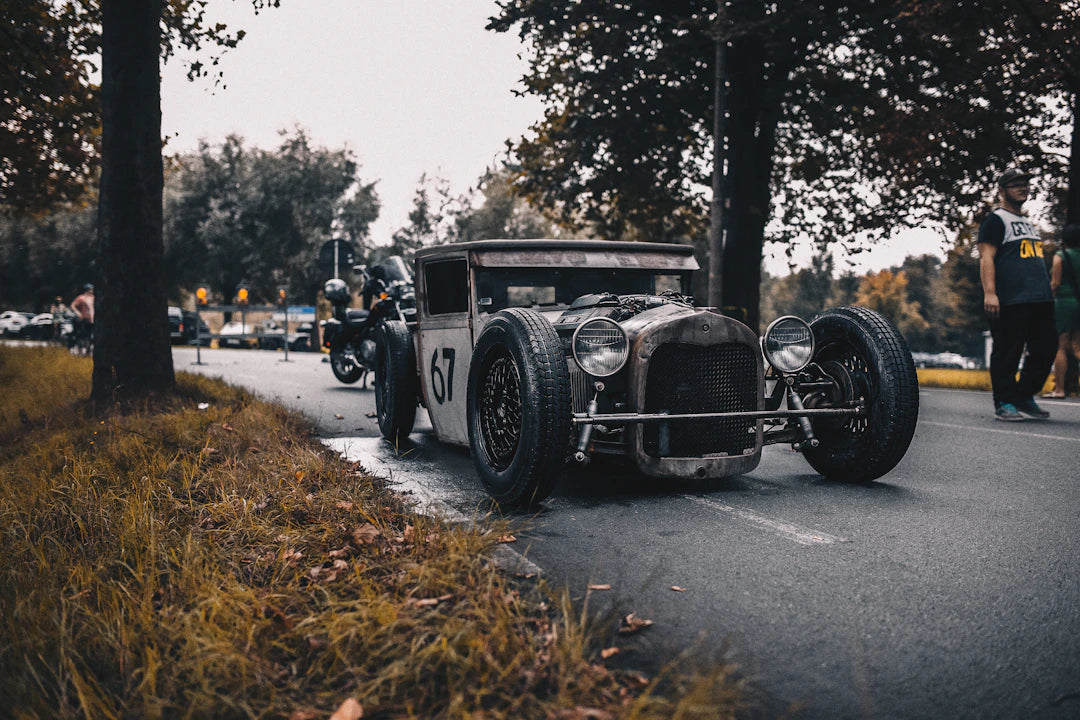Overview
Learn how to create antique finishes on guitars to enhance their aesthetic and sound. This guide covers necessary materials, techniques for distressing and layering finishes, maintaining the look, and integrating personal style. Discover the psychology behind vintage instruments and current customization trends.
Frequently Asked Questions
1. What materials do I need to achieve an antique finish on my guitar?
2. Which types of guitars are best for antique finishes?
3. What are some techniques for distressing the wood of my guitar?
4. How can I maintain the antique finish on my guitar?
5. What is the significance of guitar pickups when customizing for vintage aesthetics?
Achieving a vintage aesthetic for your guitar can transform its appeal and further enhance its playability. Whether you are an avid musician or a guitar enthusiast, understanding the techniques for creating antique finishes is essential. This guide will walk you through various methods to give your instrument that timeless charm, all while ensuring your customizations resonate with your personal style. Furthermore, we will touch upon how a Telecaster-style guitar pickup can affect your sound and how trends like guitar color change Austin are influencing enthusiasts today.
The Psychology of Vintage Instruments
Before diving into specific techniques, it's essential to comprehend why vintage finishes appeal so much to guitarists. Vintage guitars carry a story. The wear, patina, and unique scars tell of musical histories and artistic journeys. Factors such as nostalgia and the vintage look's inherent beauty often attract musicians to these classic styles. Whether it’s a Telecaster-style guitar pickup you’re working with or a more modern setup, the allure of the older styles is undeniable.
Preparing Your Guitar for an Antique Finish
Gathering Your Materials
Before embarking on your antique finish journey, you’ll need to gather the necessary materials:
- Sandpaper (various grits)
- Wood stain or paint
- Lacquer or polyurethane finish
- Rags and brushes
- Protective wear (mask, gloves, goggles)
Choosing the Right Guitar
Some guitars lend themselves better to antique finishes than others. Solid wood instruments often have better take on stains and finishes than laminate. If you're working on a popular Telecaster-style guitar pickup, ensure the body wood will enhance the overall finish. Feel free to reach out to fellow artists or research online to see what works best on similar models.
Techniques to Create Antique Finishes
1. Distressing the Wood
To achieve that authentic vintage look, start by distressing the wood of your guitar's body. Here are several techniques:
- Sandblasting: This technique effectively removes impurities and creates a rough surface for additional layering.
- Scratches and Dents: Use tools like screwdrivers or hammers to create intentional blemishes, replicating years of wear.
- Heavy Sanding: Use sandpaper to rough up specific sections of the body, especially high-contact areas like the edges and back.
2. Layering Stains and Paints
The application of stains and paints is where the magic begins. Opt for a dark stain as a base layer, which will offer depth. Here’s how to proceed:
- First Coat: Apply a thin layer of stain and allow it to penetrate the wood's surface. Wipe off excess to avoid an overpowering look.
- Subsequent Coats: After the first layer dries, consider layering lighter shades or even contrasting colors. Experimentation is key, especially with colors that resonate with the vintage style you envision.
- Flecks of Paint: For a truly unique look, take a splattering approach with lighter colors or even metallics to simulate older finishes.
3. Applying a Topcoat
To protect your beautiful finish, applying a topcoat is essential. This can enhance the overall appearance and longevity of the guitar:
- Lacquer: It provides a glossy look and can simulate the shine of classic guitars.
- Polyurethane: A more modern alternative that offers durability and resistance to moisture, although it might feel less authentic.
- Oil Finishes: Perfect for a smoother, more hand-feel finish. It can accentuate the wood grain beautifully.
Sound Matters: The Impact of Your Guitar Setup
An antique finish can dramatically impact your guitar's visual appeal, but it’s equally vital to pay attention to the sound. For instance, a Telecaster-style guitar pickup can enhance the twangy tone characteristic of vintage instruments. Ensure that your pickups complement the tonal qualities you’re aiming for. Remember, the guitar’s body and pickups work together to create an overall sound, so investing in quality components will amplify the benefits of your new finish.
Trends in Guitar Customization
The Rise of Guitar Color Change Austin
Recently, guitar customization trends like the guitar color change Austin have gained traction. Musicians in this vibrant city are embracing bold colors, unique designs, and antique finishes to stand out. This shift is inspiring others to push their creative boundaries. It’s important to note that trends evolve; knowing which colors and styles resonate with audiences can enhance your guitar’s marketability if you plan to sell or showcase it.
Techniques to Maintain Your Antique Finish
Once your guitar is finished and you have that beautiful vintage look, maintaining that charm is essential. Here are some crucial tips to keep your antique finish in prime condition:
- Avoid Direct Sunlight: Extended exposure to sunlight can fade colors and compromise the finish.
- Use a Microfiber Cloth: Regularly clean your guitar with a soft cloth to remove dust and fingerprints that can mar the finish.
- Humidity and Temperature Control: Stringed instruments thrive in stable environments. Store your guitar in a case and avoid extreme temperature changes.
Integrating Your Style with Antique Finishes
Customization is all about personal expression. When creating an antique finish, allow your style to shine. Consider incorporating personal elements, such as:
- Custom Graphics: Integrate hand-painted designs or stencils that reflect your personality.
- Unique Hardware: Using vintage-style knobs or tuners can enhance the overall aesthetic.
- Tone Woods: Choose woods notorious for their resonance and beauty—these will not only improve sound but also lend an authentic feel to your vintage look.
Getting Started with Your Project
Embarking on your antique finish project doesn’t have to be intimidating. Start with the basics and gradually build upon your techniques. As you progress, you may discover new methods that resonate more closely with your artistic vision. If you’re stuck, seeking advice from seasoned artists or online forums can provide new techniques and fresh ideas, reinforcing the sense of community you’ll find in the guitar-playing world.
Doing it yourself not only elevates your skills but provides immense satisfaction. Whether you're transforming your Telecaster-style guitar pickup or breathing new life into any other instrument, the journey of creating a vintage look is fulfilling. So, gather your materials, maintain that creative spirit, and transform your guitar into an eye-catching masterpiece. With patience and practice, you can have an antique finish that not only enhances the aesthetics but also resonates with the soul of the music you create.
This vital process of blending artistry with practicality will unlock countless possibilities for you and inspire future musicians. The legacy you leave through your instrument will speak volumes, both visually and musically. Embrace this journey, and let your creativity flow!
Linked Product

Odyssey Solstice Tele Neck SC
The Odyssey Solstice Tele Neck SC pickup offers musicians a blend of warm, articulate tones and vintage sparkle, making it suitable for a range of genres from country to blues. Hand-wound with high-quality materials, it ensures consistent performance and rich harmonic complexity. Its design caters to those seeking an authentic Telecaster sound while maintaining modern reliability.
View Product










